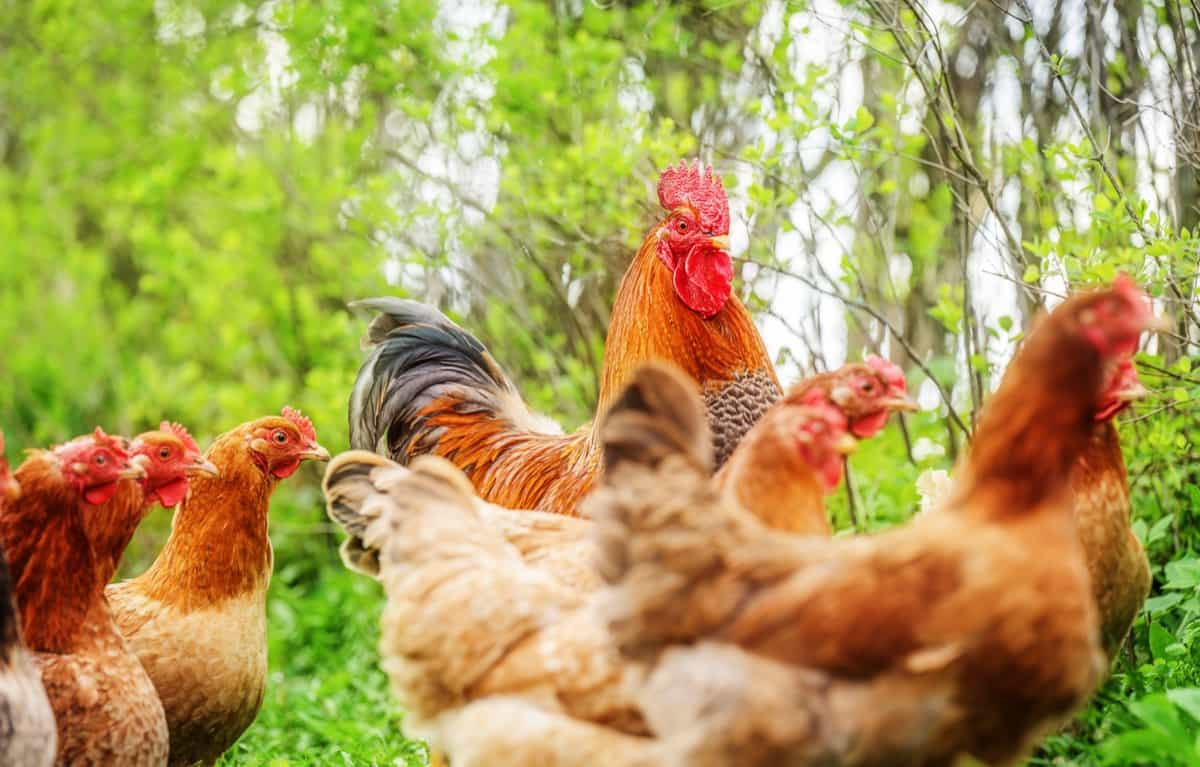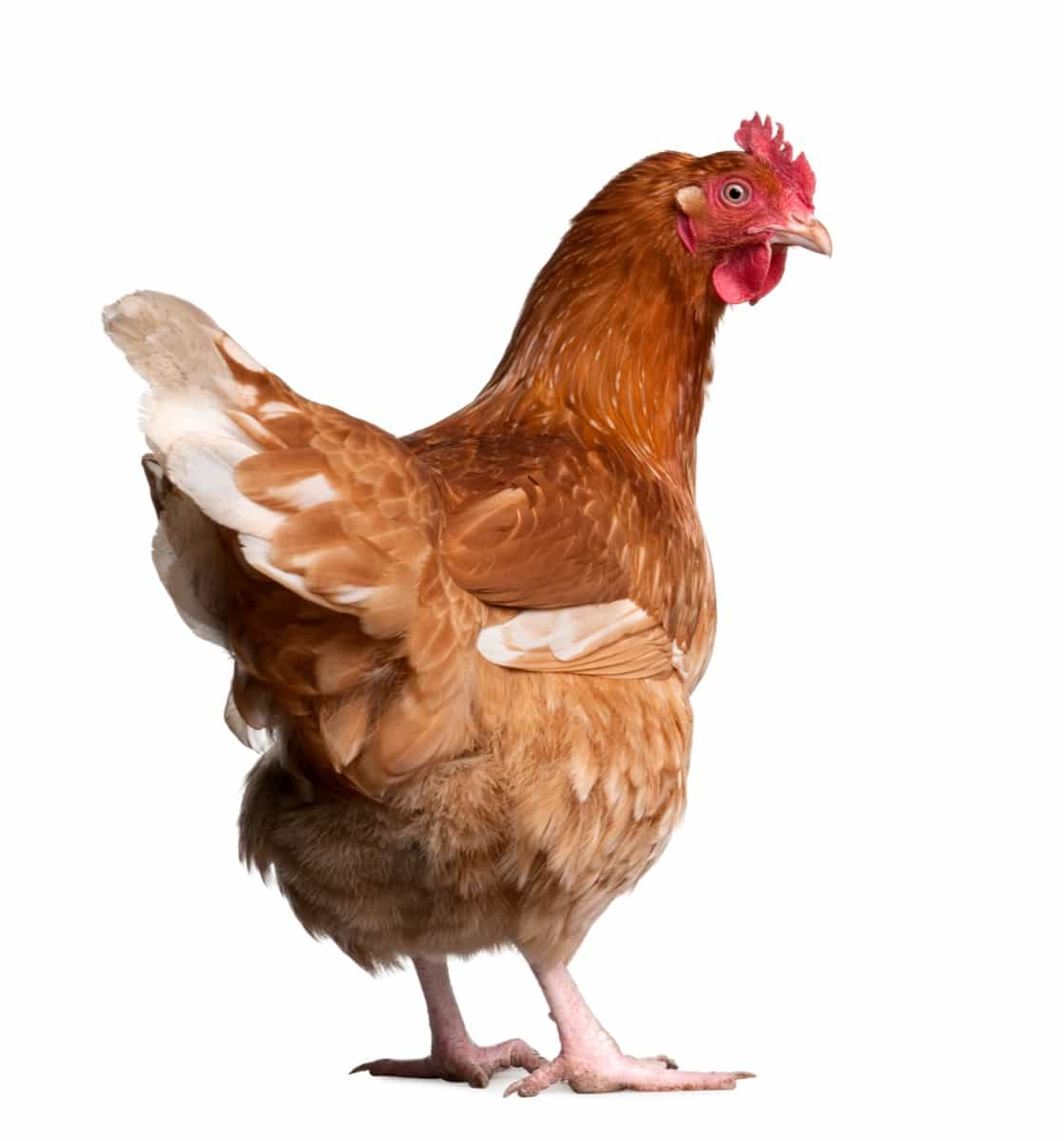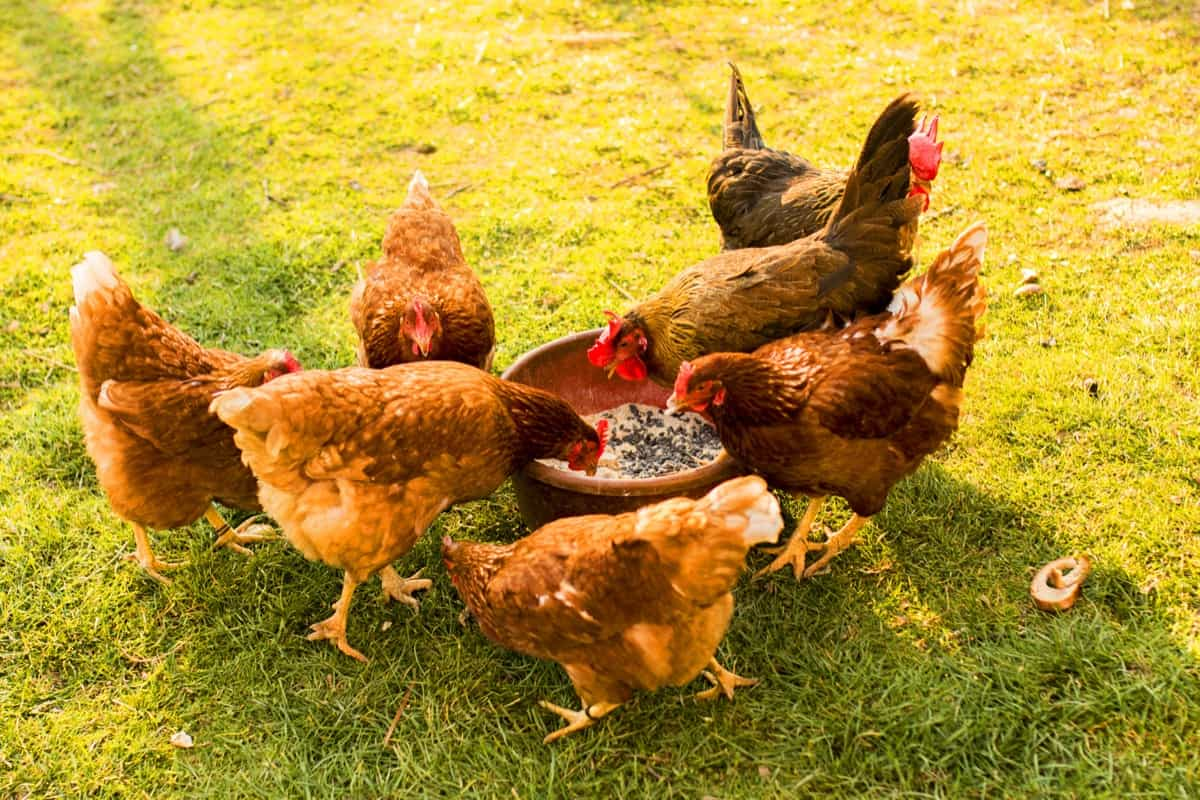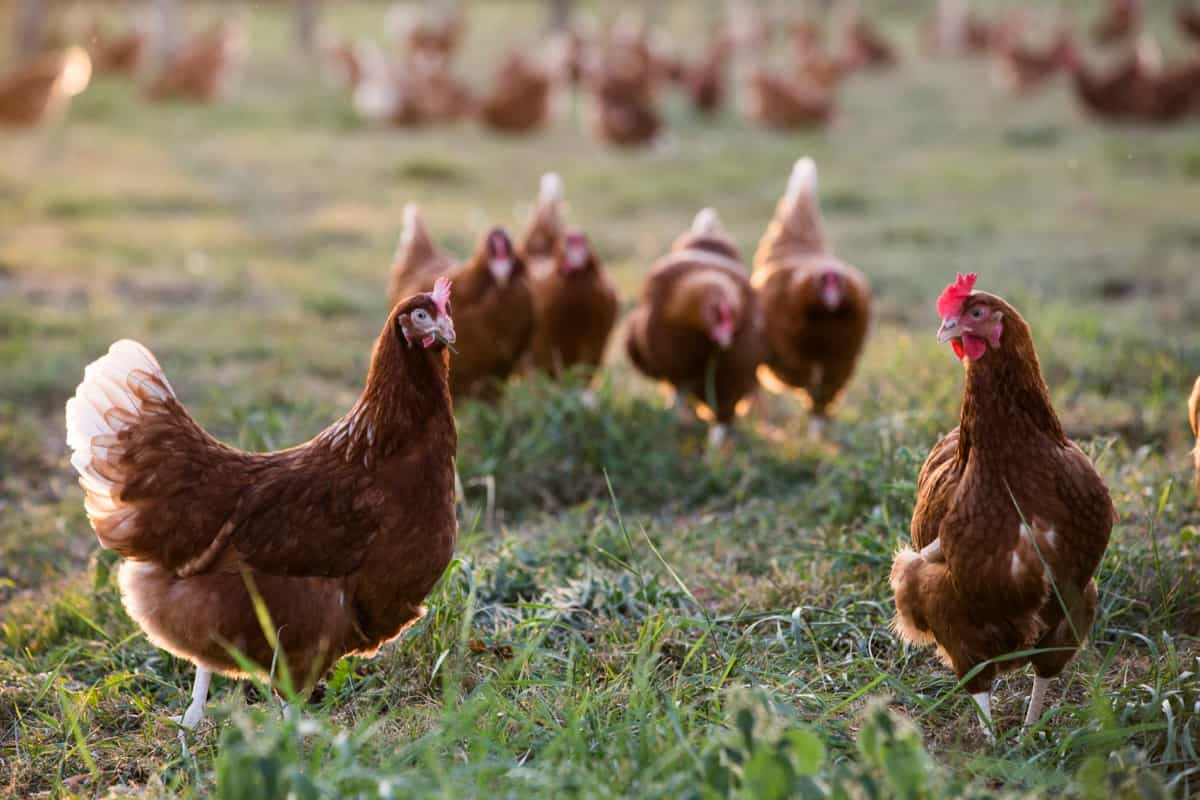Gramapriya chickens are specifically developed for free-range farming in rural and tribal areas, making them ideal for sustainable agricultural practices. The Project Directorate on Poultry developed this special breed in Hyderabad, known for its exceptional characteristics that make it ideal for free-range farming in rural and tribal areas.

All You Need to Know About Gramapriya Chicken
Advantages of Gramapriya in Rural Egg Production
Raising Gramapriya chickens in rural areas for egg production comes with numerous advantages. These chickens are well-suited for free-range farming, making them ideal for small-scale farmers in remote locations. The breed’s adaptability to local environments makes them resilient against common poultry diseases, reducing the need for costly veterinary interventions.
Moreover, their moderate body weight makes them easy to handle and manage, requiring minimal maintenance resources. This affordability factor is crucial for farmers with limited financial resources looking to start or expand their poultry business. Gramapriya chickens offer a sustainable and profitable solution for rural communities seeking to enhance their livelihoods through egg production.
Gramapriya Chicken Price and Where to Buy Them?
The cost of purchasing Gramapriya chickens can vary depending on age, gender, and location. It’s essential to do research and compare prices from different suppliers before making your purchase. The price of a day-old baby chicken can range from Rs. 20-25, with older birds costing between Rs. 200-250. You can typically find Gramapriya chickens for sale at local poultry farms, hatcheries, or through online platforms specializing in livestock sales. Ensure that you choose reputable suppliers who prioritize the health and well-being of their birds.
Housing and Shelter Requirements
Firstly, providing a safe and secure coop is essential to protect your birds from predators and harsh weather conditions. Make sure the coop has proper ventilation to maintain good air quality. Additionally, ensure that each bird has enough space to move around comfortably. A general rule of thumb is to allow at least 2-3 square feet of space per bird inside the coop. Provide roosting bars for them to perch on at night, as well as nesting boxes for laying eggs.
Outdoor access is also crucial for free-range farming. Allow your Gramapriya chickens ample space to roam during the day while still keeping them protected from potential threats. Fencing off an area with chicken wire can help prevent escapes and keep predators out. Regular maintenance of the coop is necessary to promote a healthy environment for your chickens.
Raising Gramapriya Chickens in Backyards
It can be a rewarding experience. These chickens are well-suited for free-range farming and can thrive in small spaces. To start, ensure that you have a secure coop or shelter to protect them from predators and harsh weather conditions. Providing ample space for them to roam around freely will keep them healthy and happy. Feeding your Gramapriya chickens a balanced diet rich in nutrients is essential for their growth and egg production.
To maintain their health, incorporate grains, greens, and protein sources into their daily feed regimen. Access to clean water is crucial for their well-being. Regularly monitor the health of your Gramapriya chickens and administer any necessary vaccinations as per the guidance of a veterinarian. This proactive approach can help prevent common diseases and ensure the longevity of your flock.
Feeding Requirement for Gramapriya Chicken
Ensuring proper nutrition for your Gramapriya chickens is essential to their health and productivity. The bird’s diet consists of a balanced mix of grains, protein sources, vitamins, and minerals. You can provide them with commercial poultry feed or prepare a homemade mixture based on their nutritional requirements. Fresh, clean water should always be available for the chickens to stay hydrated throughout the day.
Additionally, offering green leafy vegetables and kitchen scraps can supplement their diet and keep them healthy. Monitor their feed intake regularly to adjust the quantity as needed based on their growth stage and production levels. Overfeeding or underfeeding can impact egg production and overall health. Consulting with a poultry nutritionist can help you develop an optimal feeding plan tailored to your Gramapriya chickens’ specific needs.
Tips to Reduce Feed Cost in Gramapriya
Firstly, consider growing your feed crops like maize, sorghum, or millet. This can significantly reduce your expenses and provide fresh and nutritious food for your chickens. Another cost-saving tip is to supplement commercial feed with kitchen scraps or leftovers from fruits and vegetables. Just make sure these items are safe for consumption by chickens before feeding them. Additionally, ensure that your chickens have access to plenty of fresh water at all times. Dehydration can lead to decreased egg production and overall poor health in poultry.
You can also explore purchasing feed ingredients in bulk quantities from local suppliers or cooperatives. Buying in bulk results in lower prices per unit, saving money in the long run. Regularly assess your flock’s nutritional needs based on their age, laying cycle, and overall health status. Adjusting their diet accordingly can prevent overfeeding or underfeeding, ultimately reducing feed wastage and costs.
Gramapriya Chicken Egg Production and Laying Capacity
Gramapriya chickens are known for their impressive egg production capabilities. They can lay around 200-225 eggs per year, making them a valuable addition to any poultry farm. Their early laying age of 175 days allows for consistent and reliable egg production throughout the year.
In case you missed it: How to Craft a Comprehensive Free-Range Chicken Farming Business Plan

Gramapriya chickens’ high laying capacity makes them ideal for small-scale backyard farms and larger commercial operations. Their ability to thrive in free-range and rural environments further enhances their productivity. With proper care and management, Gramapriya hens can continue laying quality eggs consistently for years to come.
Tips for More Egg Production in Gramapriya
Regularly inspect your chicken flock for any signs of illness or parasites that may be affecting their egg-laying capabilities. Prompt treatment can prevent disruptions in production. Make sure your chickens have access to clean water at all times. Hydration is crucial for optimal egg-laying performance.
Additionally, provide your Gramapriya chickens with adequate space and comfortable nesting areas. A stress-free environment can positively impact their productivity. Maintain a consistent routine for feeding, collecting eggs, and cleaning the coop. A stable environment helps keep your Gramapriya chickens healthy and productive.
Egg Collection and Handling Procedures
Collecting and handling eggs from your Gramapriya chickens is a crucial part of poultry farming. When collecting eggs, make sure to gather them at least twice a day to prevent breakage or spoilage. Handle the eggs carefully to avoid hairline cracks that can lead to contamination. It’s best to collect the eggs into clean and dry egg trays or baskets. Always wash your hands before and after handling the eggs to maintain hygiene standards.
Store the collected eggs in a cool and well-ventilated area away from direct sunlight. Remember not to wash the eggs unless necessary, as this can remove their protective coating. Inspect each egg for any abnormalities, such as cracks, dirt, or unusual odors, before packing them for sale or consumption. Properly labeling the date of collection on each egg carton can help you keep track of freshness. By following these procedures diligently, you can ensure high-quality eggs from your Gramapriya chicken farm.
Breeding and Reproduction of Gramapriya
When it comes to breeding these birds, selecting healthy and genetically superior parent stock is key. It’s essential to ensure the right male-to-female ratio for successful mating and fertilization. Gramapriya chickens are known for their high fertility rates, making them ideal for breeding purposes. Proper management practices, such as providing a suitable nesting area and ensuring optimal environmental conditions, can greatly enhance the success of reproduction.
During the breeding season, closely monitor the birds’ health and behavior to identify any potential issues that may affect their reproductive capabilities. Implementing a well-planned breeding program can help maximize egg production and ensure a consistent supply of quality chickens for future growth.
Common Diseases and Vaccination in Gramapriya
Gramapriya chickens, like any other poultry breed, are susceptible to certain common diseases that can affect their health and productivity. Farmers need to be aware of these diseases to prevent them from spreading within the flock. Some of the common diseases that Gramapriya chickens may encounter include Newcastle disease, infectious bronchitis, fowl pox, and coccidiosis.
Regular vaccination is crucial in protecting Gramapriya chickens from these illnesses. Vaccination helps boost their immune system and reduces the risk of infections spreading. Farmers should follow a proper vaccination schedule recommended by veterinarians to ensure optimal protection for their birds. Additionally, maintaining good hygiene practices in the coop and providing a good environment can also help prevent diseases.
Cost to Start a Gramapriya Chicken Farm
The initial cost to set up this type of poultry operation varies depending on several factors. The cost to start a Gramapriya chicken farm in India can change based on the scale of operation and the quality of inputs you choose. On average, setting up a small-scale farm with around 500 birds could cost approximately Rs.1-2 lakhs initially. This includes expenses for purchasing baby chickens, feeders, waterers, heat sources for brooding, vaccination costs, as well as constructing basic housing structures.
Income Generation from Gramapriya Chicken Farm
These hardy birds are known for their high egg production, making them a profitable choice for farmers. With proper flock management, you can maximize your earnings. By selling eggs locally or to nearby markets, you can start earning revenue quickly. Additionally, consider expanding your product line to include value-added items like organic eggs or poultry meat. This diversification can attract customers and increase your farm profits.
In case you missed it: Brighten Your Flock: Raising Easter Egger Chickens for Beauty and Bounty

Participating in agricultural fairs or farmer’s markets is the main way to boost income. These events provide opportunities to showcase your Gramapriya products and connect with potential buyers. In India, the average income from a well-managed Gramapriya chicken farm can range anywhere between Rs. 50,000 and Rs. 1 lakh per month. This estimation takes into account factors like flock size, feed costs, healthcare expenses, and market fluctuations.
Government Support for Gramapriya Poultry Farming
Various government schemes and programs are available to assist farmers in setting up and running their farms. These initiatives are important to provide financial assistance, training, and resources to help improve productivity and profitability. Farmers can benefit from subsidies on equipment purchases, feed costs, vaccinations, and even marketing support. Additionally, government-sponsored training programs educate farmers on best practices for raising Gramapriya chickens effectively.
By leveraging these support systems, farmers can reduce operational costs and improve poultry farm sustainability. This not only benefits individual farmers but also contributes to the growth of the local poultry industry as a whole. In India, the NABARD (National Bank for Agriculture and Rural Development) offers various schemes and subsidies for the development of poultry farming, including Gramapriya chicken farming.
Sustainable Practices in Gramapriya Chicken Farming
Implementing eco-friendly methods benefits the environment and also contributes to the overall health of chickens. One sustainable practice is using organic feed options for your flock. This reduces exposure to harmful chemicals and increases healthier growth and egg production. Additionally, incorporating natural supplements like herbs into their diet can boost immunity and reduce the need for antibiotics. Another key aspect of sustainability is efficient waste management.
Composting chicken manure can create nutrient-rich fertilizer for your crops, completing a beneficial cycle on your farm. Utilizing solar panels or wind turbines for energy can also help reduce carbon footprint. Furthermore, practicing rotational grazing allows the land to recover naturally while providing fresh grasses for your chickens to feed on. By prioritizing sustainability in Gramapriya chicken farming, you’re not just caring for your birds but also nurturing a harmonious relationship with nature.
Marketing Strategies for Gramapriya Chicken Products
Utilizing social media platforms can be the main way to showcase your chicken products and engage with potential customers. Sharing photos of your healthy and happy chickens roaming freely on the farm can attract attention and build trust among consumers. Collaborating with local farmers’ markets or grocery stores can also help reach a wider audience. Offering samples of delicious dishes made from Gramapriya eggs or meat can entice customers to make a purchase.
Highlighting the nutritional benefits of Gramapriya chicken products, such as being high in protein and low in fat, can appeal to health-conscious consumers looking for quality food options. Producing a visually appealing website or online store where customers can easily place orders for fresh eggs or meat can streamline the buying process. Implementing targeted advertising campaigns on platforms like Google Ads or local newspapers can help increase brand awareness and drive traffic to your business.
Challenges and Difficulties in Raising Gramapriya Chickens
Some common difficulties faced by farmers include managing diseases and health issues, fluctuating market prices, ensuring proper bird nutrition, and dealing with environmental factors that can impact egg production. Additionally, maintaining a balance between costs and profits can be challenging.
In case you missed it: Ultimate Guide to Raising Legbar Chickens: Breeding, Farming Practices, Diet, Egg-Production

However, with proper research, planning, and dedication to best practices in poultry farming, many of these challenges can be overcome. Farmers can navigate through these difficulties successfully by staying informed about advancements in chicken health management, seeking support from agricultural experts or government programs, implementing sustainable farming practices, and staying adaptable to changes in the market dynamics.
Conclusion
Gramapriya chickens are highly adaptable to different climatic conditions, making them suitable for a wide range of regions. This breed is known for thriving in free-range environments, making it ideal for rural and tribal areas where extensive farming practices are common. Whether you’re a beginner or an experienced farmer, these versatile birds could be a valuable addition to your poultry operation.
- Economical Aquaculture: A Guide to Low-Budget Fish Farming
- 15 Common Planting Errors That Can Doom Your Fruit Trees
- How to Make Houseplants Bushy: Effective Tips and Ideas
- Innovative Strategies for Boosting Coconut Pollination and Yield
- Pollination Strategies for Maximum Pumpkin Yield
- The Complete Guide to Chicken Fattening: Strategies for Maximum Growth
- Natural Solutions for Tulip Problems: 100% Effective Remedies for Leaf and Bulb-Related Issues
- Revolutionizing Citrus Preservation: Towards a Healthier, Greener Future
- Natural Solutions for Peony Leaf and Flower Problems: 100% Effective Remedies
- Maximizing Profits with Avocado Contract Farming in India: A Comprehensive Guide
- Natural Solutions for Hydrangea Problems: 100% Effective Remedies for Leaf and Flowers
- The Ultimate Guide to Choosing the Perfect Foliage Friend: Bringing Life Indoors
- From Sunlight to Sustainability: 15 Ways to Use Solar Technology in Agriculture
- The Ultimate Guide to Dong Tao Chicken: Exploring from History to Raising
- The Eco-Friendly Makeover: How to Convert Your Unused Swimming Pool into a Fish Pond
- Mastering the Art of Delaware Chicken Farming: Essentials for Healthy Backyard Flocks
- 20 Best Homemade Fertilizers for Money Plant: DIY Recipes and Application Methods
- How to Craft a Comprehensive Free-Range Chicken Farming Business Plan
- Brighten Your Flock: Raising Easter Egger Chickens for Beauty and Bounty
- How to Optimize Your Poultry Egg Farm Business Plan with These Strategies
- Subsidy for Spirulina Cultivation: How Indian Government Schemes Encouraging Spirulina Farmers
- Ultimate Guide to Raising Dominique Chickens: Breeding, Feeding, Egg-Production, and Care
- Mastering the Art of Raising Jersey Giant Chickens: Care, Feeding, and More
- Ultimate Guide to Raising Legbar Chickens: Breeding, Farming Practices, Diet, Egg-Production
- How to Raise Welsummer Chickens: A Comprehensive Guide for Beginners
- How to Protect Indoor Plants in Winter: A Comprehensive Guide
- Ultimate Guide to Grow Bag Gardening: Tips, Tricks, and Planting Ideas for Urban Gardeners
- Guide to Lotus Cultivation: How to Propagate, Plant, Grow, Care, Cost, and Profit
- Agriculture Drone Subsidy Scheme: Government Kisan Subsidy, License, and How to Apply Online
- Ultimate Guide to Raising Araucana Chickens: Breed Profile, Farming Economics, Diet, and Care
- Bringing Hydroponics to Classroom: Importance, Benefits of Learning for School Students
- Ultimate Guide to Raising Polish Chickens: Breed Profile, Farming Economics, Diet, and Care
- Ultimate Guide to Raising Australorp Chickens: Profile, Farming Economics, Egg Production, Diet, and Care
- Silkie Chicken Farming: Raising Practices, Varieties, Egg Production, Diet, and Care
- Sussex Chicken Farming: Raising Practices, Varieties, Egg Production, Diet and Care
- Homemade Feed Formulations for Livestock: Discover Cost-effective Starter to Finisher Feed Recipes